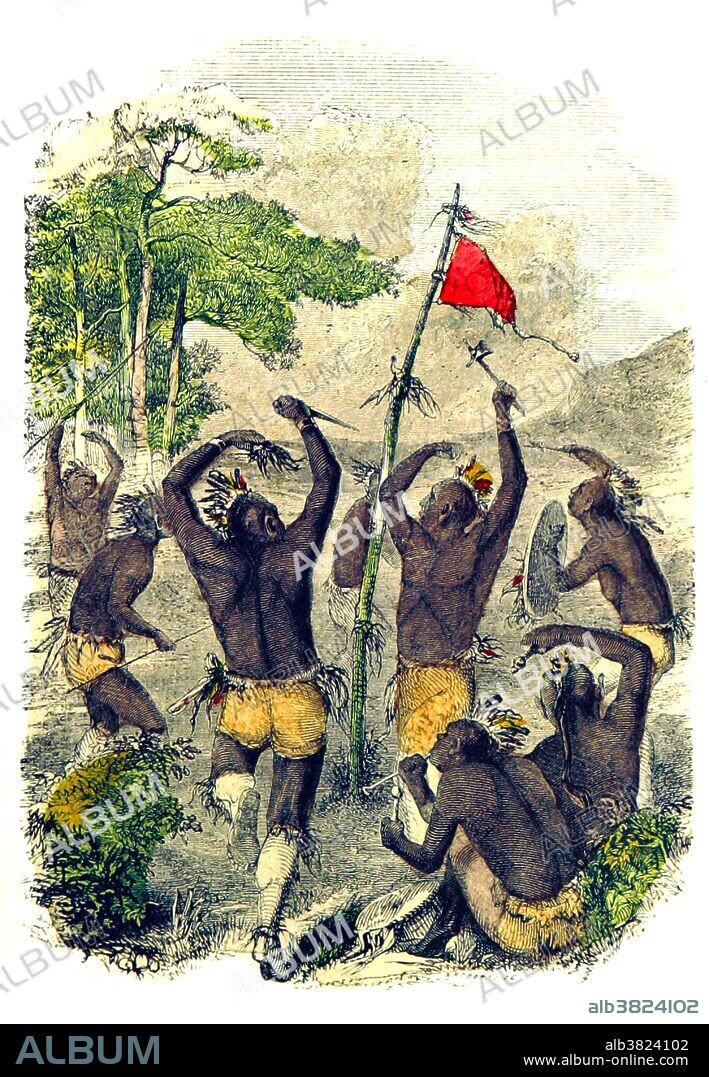alb3824102
Native American Indian War Dance

|
Zu einem anderen Lightbox hinzufügen |
|
Zu einem anderen Lightbox hinzufügen |



Haben Sie bereits ein Konto? Anmelden
Sie haben kein Konto? Registrieren
Dieses Bild kaufen

Titel:
Native American Indian War Dance
Untertitel:
Siehe automatische Übersetzung
Image taken from page 511 of "The Indian Races of North and South America" by Charles De Wolf Brownell, 1853. Many tribes practiced a War Dance on the evening before an attack to observe certain religious rites to ensure success. The warriors took part in a war dance while contemplating retaliation and the dance stirred emotions and filled the braves with a profound sense of purpose as they prepared for battle. Though the ceremonies varied from one tribe to another, there are common points among many including singing, often extending over an entire day and night, interspersed with prayers, handling of sacred objects or bundles, and occasional dancing. Often a sweat lodge or other purification ceremony was also held, incense burned, faces might be painted, and a pipe was frequently passed between the participants. Generally, the only musical instruments used in these ceremonies are rattles, drums, and whistles. In the Pacific Northwest, the Pueblos of the Southwest, and the Iroquois of the Woodlands, participants often were dressed and masked to represent the various gods or supernatural creatures and who acted out parts of the ritual.
Bildnachweis:
Album / Science Source / British Library
Freigaben (Releases):
Model: Nein - Eigentum: Nein
Rechtefragen?
Rechtefragen?
Bildgröße:
3000 x 4331 px | 37.2 MB
Druckgröße:
25.4 x 36.7 cm | 10.0 x 14.4 in (300 dpi)
Schlüsselwörter:
AMERIKANER • GRUPPE • HOPI • ILLUSTRATION • ILLUSTRATIONS • INDIANER • INDISCH • KRIEGSTANZ • MANN • RELIGION • RITUELL • STAMM • TRADITION • TRADITIONELL • VÖLKERSCHAU • ZEREMONIE
 Pinterest
Pinterest Twitter
Twitter Facebook
Facebook Link kopieren
Link kopieren Email
Email
